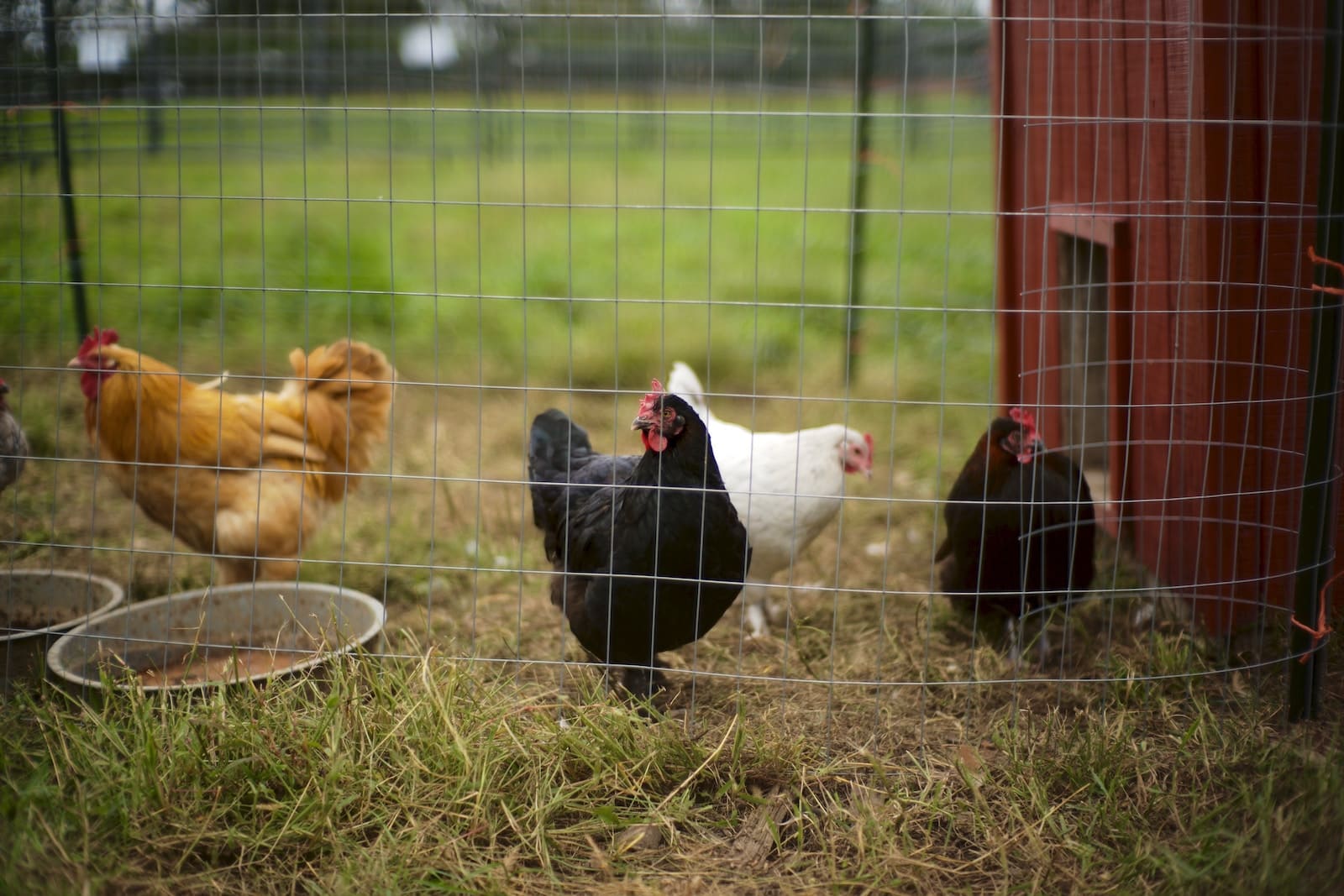Chickens need nesting boxes to lay their eggs. Think of these as special beds for hens to be cozy and safe when they give birth to chicks or lay eggs we can eat. Each hen doesn’t need her own box, though.
Usually, you can have one box for every four or five chickens in a group.
The size of the box matters too; it should be about 12 inches by 12 inches. If you had a home called the Penthouse Coop, which fits up to eight chickens, three boxes would be just right for them.
Where you put the boxes is important as well. You want your chickens to find them easily and feel happy laying their eggs there. Having enough boxes means less fighting among the hens because they don’t all want the same spot at once.
Some people like making their own chicken homes and might build these egg-laying spots themselves using plans that someone else has made up.
This guide will help show how many nesting places hens really need and where’s best place them so that both you and your feathery friends are happy. Get ready to learn more!
Factors to Consider for Nesting Boxes
One important factor to consider for nesting boxes is the number of chickens per nesting box, which can impact egg production and the well-being of the hens. Additionally, the size and placement of nesting boxes play a crucial role in creating a comfortable and productive environment for your chickens.
Number of chickens per nesting box
Each chicken does not need its own nesting box. Usually, you want to have one box for every 4 to 5 hens. This works well because hens often lay eggs at different times of the day. So they can take turns using the boxes.
If you have too few boxes, your chickens might fight over them or get stressed. That could make them lay fewer eggs. Try to give them enough space by having a good number of boxes in your coop design.
This helps keep everything calm and organized for egg laying.
Nesting box size
The size of nesting boxes for chickens is important. It should be about 12 inches x 12 inches to provide enough space for hens to lay their eggs comfortably. Larger breeds may need slightly bigger boxes, but this size generally works well for most chickens.
Considering the dimensions and ensuring that they are appropriate for your breed can help encourage egg-laying in a stress-free environment. This also helps prevent competition among hens when it comes time to lay eggs.
Placement of nesting boxes
When placing nesting boxes in the coop, consider installing them at least 18 inches above the ground to prevent hens from kicking out bedding material. It’s important to ensure easy access for chickens while also providing a sense of privacy and security within the coop.
Additionally, positioning the nesting boxes away from high-traffic areas can help minimize disturbances during egg-laying, ultimately contributing to a more productive and comfortable environment for your flock.
Ensure that nesting boxes are well-lit and properly ventilated to maintain a favorable atmosphere for egg production. Placing curtains or flaps over the front of the boxes can offer hens an added sense of seclusion and tranquility while they lay their eggs.
Tips for Choosing and Using Nesting Boxes
Consider different types of nesting boxes such as plastic, wooden, or metal options and choose the best fit for your chicken coop. Explore DIY options for nesting boxes and learn about common issues that may arise and their solutions to ensure your chickens are comfortable and productive.
Different types of nesting boxes
There are various types of nesting boxes for chickens. Each type has its advantages and may suit different flock sizes and coop setups. Here are some common options to consider:
- Rollaway Nest Boxes: These boxes have sloped floors, causing eggs to roll out of the hen’s reach once laid, keeping them cleaner and preventing hens from pecking at them.
- Community Nest Boxes: These large nesting areas can accommodate several hens at once, suitable for larger flocks in a spacious coop.
- Individual Nest Boxes: These separate compartments provide privacy for each hen, reducing competition for laying space and potential stress.
- Covered Nest Boxes: Enclosed or covered nesting boxes offer extra privacy, making hens feel safer and more secure while laying their eggs.
- Open-Air Nest Boxes: Some designs allow fresh air circulation into the nesting area, ideal for warmer climates and promoting good ventilation within the coop.
- Elevated Nest Boxes: Placing nest boxes off the ground can deter pests from getting to the eggs and make cleaning underneath easier.
DIY options
Consider these DIY options for nesting boxes:
- Use wooden crates or sturdy cardboard boxes to create simple, inexpensive nesting boxes.
- Repurpose old furniture such as cabinets or drawers to construct larger nesting boxes suitable for multiple hens.
- Utilize plastic storage containers by cutting out an entrance and lining them with appropriate bedding for comfortable nesting space.
- Construct nesting boxes using basic woodworking skills and common materials like plywood, ensuring proper dimensions based on the size of the chickens.
- Upcycle materials like pallets or scraps of lumber to craft custom – sized nesting boxes, tailored to fit the specific needs of your flock.
Common issues and solutions
Chicken nesting boxes can be prone to common issues, which can affect egg-laying and chicken comfort. Here are some common issues and their solutions:
- Size mismatch: If the nesting boxes are too small, hens may refuse to use them. Ensure that the nesting box size is appropriate for the breed of chickens in your flock.
- Nesting box placement: If the boxes are not well-placed, hens may not feel secure laying eggs. Position the nesting boxes in a quiet, dark, and secluded area within the coop.
- Too few boxes: Insufficient nesting boxes can lead to competition among hens for space, causing stress and reduced egg production. Provide an adequate number of boxes based on the size of your flock.
- Dirty or smelly boxes: Accumulated droppings or odors can deter hens from using the nesting boxes. Regularly clean and replace bedding to keep the nesting boxes clean and fresh.
- Poor design: Nesting box designs that don’t consider hen behavior may cause discomfort and reduce egg production. Choose or build nesting boxes that match the natural preferences of hens for privacy and security.
- Lack of privacy: Hens need privacy when laying eggs; otherwise, they may seek alternative spots outside the coop. Ensure that the nesting boxes provide a sense of seclusion for your chickens.
- Inadequate bedding: The absence of suitable bedding materials in nesting boxes can make them uncomfortable for hens to lay eggs in. Use soft materials like straw or wood shavings as bedding to create a cozy nest environment.
Conclusion
In conclusion, understanding the nesting habits of your chickens is crucial in providing proper poultry housing. By considering factors such as the number of chickens per nesting box and the size and placement of these boxes, you can ensure their comfort.
With practical tips for choosing and using nesting boxes, including DIY options and common issue solutions, creating an efficient system is achievable. Implementing these strategies not only improves chicken care but also promotes a stress-free environment for hens to lay eggs.
Explore DIY plans or ready-made solutions to create optimal nesting spaces that benefit both chickens and small-scale farming efforts.

